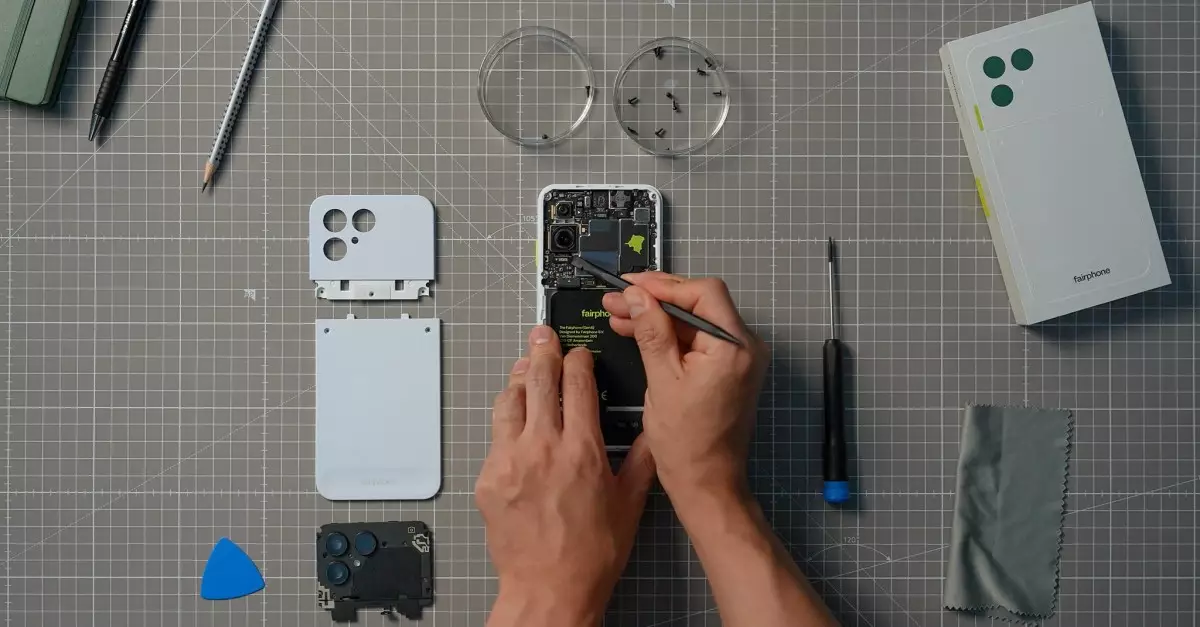The Fairphone 6 stands out as a beacon of progress in the saturated smartphone market, not just because of its modest dimensions or impressive display technology but primarily due to its unwavering commitment to repairability and sustainability. Unlike mainstream devices that often conceal their modular components behind layers of adhesive and complex assemblies, the Fairphone 6 champions a design philosophy rooted in user empowerment. It preserves the legacy of its predecessors by ensuring that almost every internal component—excluding only the mainboard—is accessible and replaceable by the average consumer using simple tools like a T5 Torx screwdriver.
This approach effectively challenges the throwaway culture prevalent in the smartphone industry. While many companies adopt a model where obsolescence is baked into the product lifecycle, Fairphone demonstrates that durability combined with reparability can be both practical and profitable. The company’s insistence on screw-based assembly rather than gluing entire components exemplifies a bold stance against planned obsolescence, long-term electronic waste concerns, and the environmental toll associated with frequent device replacement.
Balancing Practicality with Performance
Despite its repair-friendly design, the Fairphone 6 is not positioned to rival flagship smartphones in raw power or high-end specifications. The device employs a Qualcomm Snapdragon 7S Gen 3 chipset paired with a 6.3-inch LTPO OLED display that refreshes up to 120Hz, signaling a focus on efficient performance and visual quality rather than bleeding-edge benchmarks. This trade-off highlights Fairphone’s philosophy: prioritizing longevity, user autonomy, and sustainability over chasing the latest top-tier specs.
The dual rear camera setup, designed to be user-replaceable, is intentionally modest—adequate for everyday photography but far from the high-resolution, multi-lens systems found in premium devices. The USB-C port, limited to USB 2.0 speeds, further reflects the device’s emphasis on durability and repairability over speed-intensive features. Yet, these compromises are consciously made, with the understanding that the device’s core appeal lies in its longevity and ease of maintenance, not its ability to satisfy tech enthusiasts craving the latest specs.
Sustainability in Action: Long-Term Support and Ethical Design
One of the most compelling aspects of the Fairphone 6 is its long-term software support. The company promises seven years of Android OS updates and eight years of security patches, an unprecedented commitment in the industry that traditionally offers only a handful of years of support. This extended period ensures that consumers can hold onto their devices with confidence, reducing the cycle of disposal and replacement that is typical elsewhere.
Fairphone’s model also incorporates a loyalty program that rewards users for repairing their devices—a step that encourages a shift toward a more eco-conscious consumer mindset. Additionally, the availability of repair parts through both Fairphone and iFixit underscores the company’s dedication to a repair ecosystem that is accessible and financially feasible for ordinary users.
Yet, criticism persists regarding some of the design limitations, notably the absence of tool-free battery replacements and reliance on screws for many repairs. While this may seem like a barrier for average consumers, it is arguably a more sustainable approach in the long run because it maintains the integrity of the device and ensures more durable repairs.
A Market Niche or a Paradigm Shift?
The Fairphone 6 occupies a unique niche—an intersection of ethical design, sustainability, and a pushback against industry norms. Its high IFixit repairability score, five consecutive victories since the Fairphone 2, marks it as a leader rather than a follower. In a landscape dominated by proprietary, non-repairable smartphones, Fairphone boldly advocates for a future where consumers retain control over their devices.
This device’s higher price point in certain regions, like the United States, reflects its specialized positioning. It is not marketed as a luxury flagship but as a pragmatic, ethically driven choice. For consumers tired of disposability and eager to make environmentally responsible choices without sacrificing basic functionality, the Fairphone 6 offers a compelling proposition.
The Fairphone 6 challenges us to rethink what a smartphone can be. It pushes back against the throwaway culture and promotes a future where sustainability, repairability, and user agency are at the core of device design. Whether it will inspire mainstream manufacturers to follow suit remains to be seen, but for now, it undoubtedly sets a powerful benchmark for ethical innovation in mobile technology.

